Featured Book
The Matter with Things
By Iain McGilchrist
Richard Gault reviews The Matter with Things, published by Perspectiva Press in 2021. It is Iain McGilchrist’s magnum opus, the product of ten years’ work and the culmination of his varied careers as a neuroscientist, literary scholar, philosopher and psychiatrist. His core argument is that we need to move from an understanding based upon the reality of matter to one based on process and flow: ‘the assumption of a materialist world composed of “things” is the greatest impediment we face’ (p. xvii).
One of McGilchrist’s central points is that our society is one in which we rely on representations of the world as our way of knowing it. Scientific theories expressed in mathematical form, economic models, photographs – all re-present the reality they purport to describe. They are maps, useful maps, but nevertheless just maps. However, we not only treat them as if they faithfully represent the territory, ‘the map, displaces the terrain that is mapped, and is taken for the reality…’ (p. 1064). So we live ever more in a virtual world, not the real one. Why should this be?
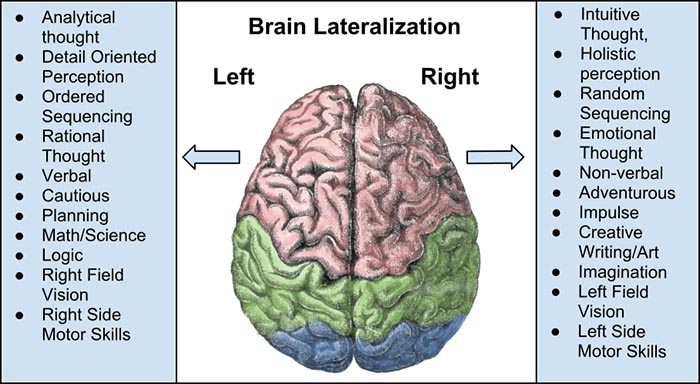
The Two Hemispheres of the Brain
The prism through which McGilchrist explains his ideas is that of the difference between the two sides of the brain. As in his previous and widely acclaimed book, The Master and his Emissary (Yale University Press, 2009), he demonstrates how the two halves perform in distinct though complementary ways. For example, ‘from the left hemisphere’s point of view, imagination […] is a species of lying, from the right hemisphere’s point of view, it is […] necessary for access to the truth’ (p. 767).
McGilchrist’s thesis is that the left hemisphere has come to dominate in our society; he maintains for instance that ‘the left hemisphere [is] being used largely for paying narrow-beam, sharply focussed attention to the world, for the purpose of manipulation’ (p. 21). It is also the hemisphere ‘devoted to re-presentation’ (p.105), hence our attachment to maps and models of reality. The right hemisphere, by contrast, is characterised by ‘paying open, sustained, vigilant attention to the world, in order to understand and relate to the bigger picture’ (p. 21). It is, therefore, he argues, ‘a more important guide and a more reliable one to the nature of reality’ (p. 134).
His use of language here can seem strange because he writes of the two hemispheres as if they are things with agency. In the Introduction, he clarifies this: ‘I am aware that a hemisphere on its own cannot properly be said to do what only a person can do: “believe”, “intend”, “decide”, “like” and so on. These and similar formulations should be understood as avoiding the repetition of such cumbersome locutions as “a person relying on the faculties of the left (or right) hemisphere believes (intends, decides, likes)”, etc. You are not your brain; you are a living human being’ (p. 27).
It is also important to note that his development of the two-hemisphere theory does not mean that he believes that the brain gives rise to consciousness. On the contrary, like a growing number of contemporary scientists/philosophers, such as Bernardo Kastrup [The Idea of the World (Iff Books, 2019)] and Federico Faggin [Silicon (Waterside Productions, 2021).] McGilchrist believes that ‘consciousness is prior ontologically to matter’ (p. 1062). He discusses three current theories which attempt to explain the relationship between the brain and mind, and quickly dismisses the first – that the brain itself generates consciousness, the theory of ‘emission’. He gives more credence to the alternative theory of ‘transmission’ – the idea that the brain is a kind of radio receiver – but argues at some length in Chapter 25 for the third theory: ‘I believe that the function of the brain is to create by permission, in other words by acting as a kind of filter’ (p. 1085).
In this he is close to Kastrup, who also sees an individual as a being filtering consciousness, but where he explains the process using system theory, McGilchrist’s explanations are in terms of the characteristics of the brain’s two hemispheres. Thus, if we choose to rely heavily on our left hemisphere to filter, we are going to have a different consciousness than if we had chosen to rely on the right hemisphere which gives us an understanding of the bigger picture.
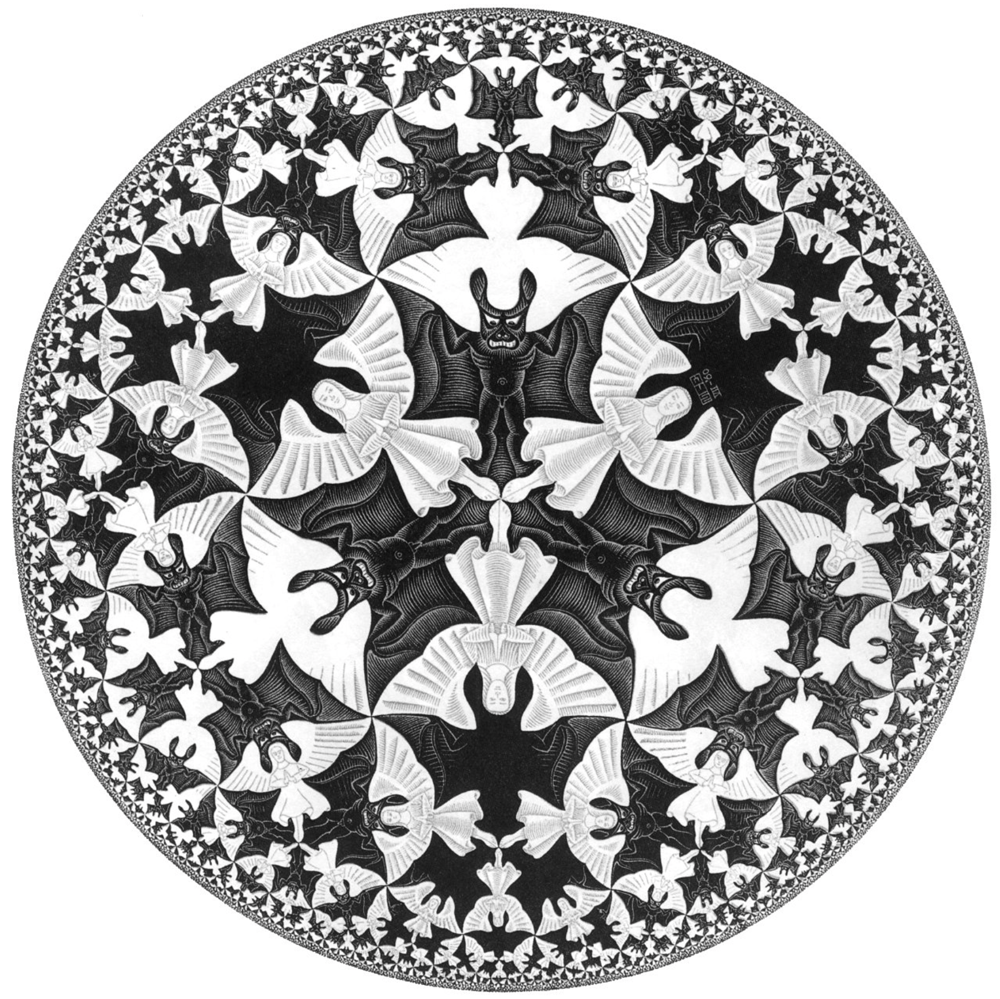
Seeing the Bigger Picture
So what is this bigger picture? This could be seen as the key question McGilchrist addresses. If there is a bigger picture, then there must also be a smaller one. Obvious? Yes, but recognising the significance of the obvious is the work of genius.
It seems obvious that reality comprises more than one ‘thing’: we do not live in an indistinguishable sea of fog. There is this and there is that. Division is ontologically fundamental, and the existence of the two hemispheres reflects this fact. When we are seeking to understand something we have a choice; we can do it either via reductionism and analysis – investigating its smaller constituents – or we can attempt to seek the thing’s place in a bigger whole. The left hemisphere way is the former, ‘narrow-beam, sharply focussed attention’, while the right hemisphere is striving for the holistic view. Science generally goes the way of the left hemisphere (ecology being a possible exception). McGilchrist does not argue against the reductionism of science, but rather for the need to integrate the knowledge it yields into the more comprehensive view given by the right hemisphere. This is something that science itself cannot easily do and he lists a number of reasons.
One is that the methods of science – reason, rationality and quantification – are not equipped for the task. McGilchrist devotes a lot of attention to their limitations in Part II of the book. What is needed are the faculties of intuition and imagination, he argues – faculties exercised by the right hemisphere but misappreciated by the left hemisphere and therefore have been allowed to atrophy. How much richer, he suggests, would our own experiences be, and how much healthier the world, if when we shopped we looked outward with our imagination. Take an avocado from Peru on the supermarket shelf: as well as recognising its price, can we exercise insight to see its cost in environmental and social terms? Can we also get some intuitive sense of the majestic web of relationships that resulted in its presence here – relationships stretching far in space and time? Can we thereby allow ourselves to be lost in awe by this simple fruit? Probably not. McGilchrist says that, ‘We do not permit ourselves to be awestruck or amazed by what it is we come to see’ (p.1287).
Then there is the important principle that we can go from the larger to the smaller but not from the smaller to the larger. The one, he writes in Chapter 21, can – and does – give rise to the many, but not the many to the one: ‘the left hemisphere, having dismantled the universe, it is at a loss to know how to put it together again’ (p. 878). To see the bigger picture, we need to begin with an idea of what it is, and science lacks this. Think of a jigsaw. Without knowing what the whole can be, assembling the individual pieces is a near-impossible task. The tragedy is thus that we see a world of fragments rather than one in which the parts belong to a whole (see pp. 848-9). However, if we have a vision of the whole, then dividing reality into parts is worthy, as it deepens our understanding. ‘The whole purpose of division’, McGilchrist tells us, ‘is to enrich a union’ (p. 773).
In his view, therefore, to understand a part as a piece of a whole, it is necessary to recognise the part as having a purpose, that is, that it has an extrinsic teleology – serving something bigger than itself. But teleology is a ‘dreadful’ word in science (p. 477), because (quoting the biotechnologist Eugene Koonin) ‘teleology is a non-scientific concept’ (p. 1178). McGilchrist cites J.B.S. Haldane [/]: ‘teleology is like a mistress to a biologist; he cannot live without her but he’s unwilling to be seen with her in public’ (p. 477). He recounts the appalling experience of ‘the distinguished palaeontologist Dr Günter Bechly [/] [who] having been a lifelong atheist, and a follower of Richard Dawkins, in 2015 […] was foolish enough – or brave enough – to express open support for Intelligent Design. […] He was immediately forced to leave his post’ (p. 538).
Purpose is, of course, accepted by engineers: machines do have an extrinsic purpose, always a utilitarian one. And we commonly perceive utility as the purpose: ‘At the core of the contemporary world is the reductionist view that we are – nature is – the earth is – “nothing but” a bundle of senseless particles […] whose only value is utility’ (p. 5). McGilchrist is arguing that there are other purposes, such as those found in living things, and, indeed, in the quantum world of physics. ‘Contemporary physics, too, has found teleology hard to ignore because of a change in the way we conceive probability’ (p. 1185). The objective probabilities of quantum mechanics are better understood not as expressing some meaningless randomness but as propensities or dispositions, he records the physicist David Mermin explaining (p. 1186).
Other important teleologies include intrinsic purposes, a whole class impossible for science to contemplate. ‘I suggest’, writes McGilchrist:
… that living beings are neither purposeless nor random, but have, as well as goals of their own, intrinsic purpose. […] We are grateful for the existence of things in themselves, for no other reason. Life is a dance – a celebration; and it has the nature of a gift. It is neither a mechanism to be exploited nor a problem to be solved […] it looks like the purpose of the emergence of life from consciousness is to enable the recognition of value (p. 1186).
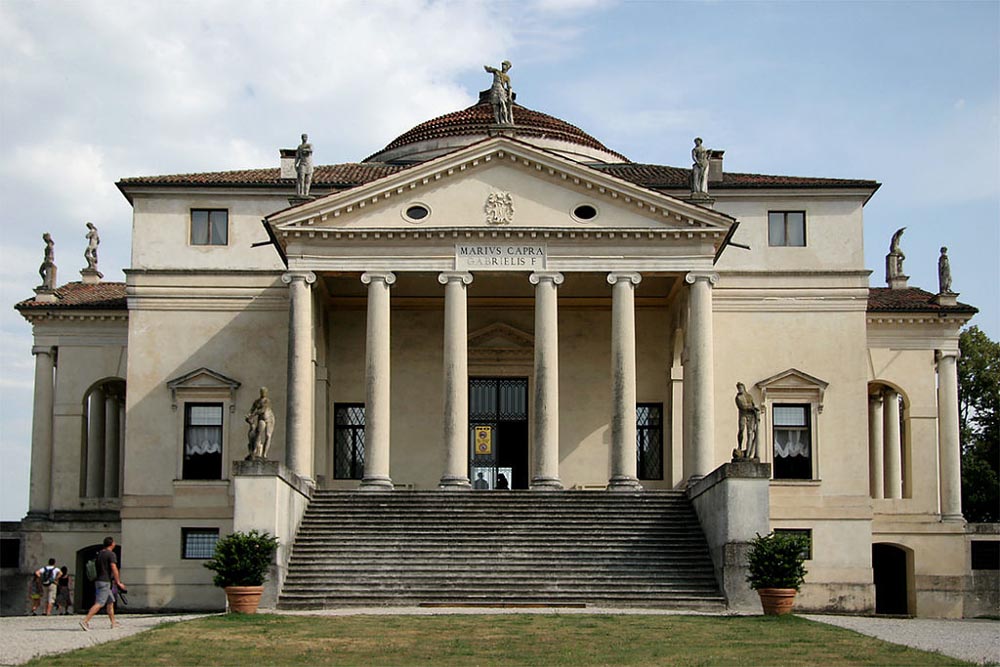
Truth, Goodness, Beauty
McGilchrist rightly identifies value as one of the areas which need a major rethink. ‘For the left hemisphere, value is something we invent; which is separate from and, as it were, painted onto the world; and whose function is utility. For the right hemisphere, on the other hand, value is something intrinsic to the cosmos; which is disclosed and responded to’ (p. 1132). So, McGilchrist includes ‘value […] as a constitutive element of reality […] is as foundational as consciousness’ (p. 1122).
He identifies three values as fundamental: the ancient principles of truth, goodness and beauty. These are related to each other, but not reducible to anything more basic. In particular he claims that ‘At the core of beauty is the capacity to lead us to truth’ (p. 1154). It is indeed something universal. He recalls the response of Amazonian tribesmen hearing Maria Callas singing: ‘we sense there is something sacred here’, they said (p. 1152). Recognising and appreciating values is largely dependent on the right hemisphere, he claims, so in a culture where the right hemisphere itself is undervalued, so also will values be. ‘Beauty, morality and truth have been downgraded, dismissed or denied. If you want to see the consequences, you need do no more than look around you’ (p. 1165).
In fact, he urges us to do much more than look – rather we must see, see ‘into [the depths] so that reality is for the first time truly present’ (p. 768). But even a glance offers a richer experience than words can ever express. He quotes an example by the philosopher Bryan Magee [/]: ‘Even something as simple and everyday as the sight of a towel dropped on to the bathroom floor is inaccessible to language […] no words to describe the degrees of shading in its colours, no words to describe the differentials of shadow in its folds’ (p. 590). Experience trumps all, McGilchrist wants us to understand. There are good reasons to re-present experience but from a representation we cannot reconstruct the full richness of experience, another example of the asymmetric relationship between the larger and the smaller. Strangely, despite his recognition of the dangers and folly of representations and his extraordinary breadth of reading, he does not cite Owen Barfield’s classic Saving the Appearances (Barfield Press, 2011) which anticipates his concerns.
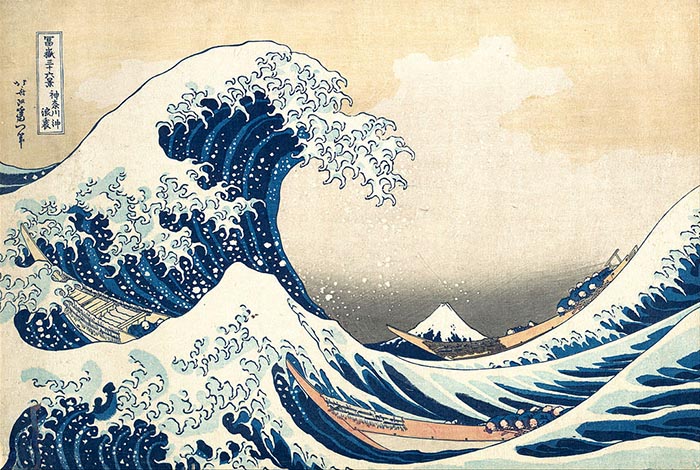
Time, Stasis and Flow
The question of time is fundamental to McGilchrist’s understanding, and he devotes two chapters and almost 100 pages to exploring it and related phenomena. ‘Time’, he says ‘is […] at the core of what it is to be a human being’ (p. 893) and ‘Our understanding of time ramifies into everything that matters: especially into our understanding of life itself’ (p. 901).
Two words are key in comprehending what he has to say: ‘stasis’ and ‘motion’. They embody two ways of understanding time. One is that it comprises a series of instants, the other that it is a continuous flow. In the former case reality ‘is like a ciné film that consists of countless static slices’ (p. 7) This is the left hemisphere view in which ‘things appear simply static and what has to be explained is how motion comes about to this static scene; whereas to the right hemisphere, everything flows, as it is immediately experienced, and what needs to be explained is how stability can arise from this flow’ (p. 903). Here McGilchrist is inviting us to contrast ‘the difference between representations of experience and experience itself’ (p. 882).
An example of this is the way we hear music. Do we experience it as a series of discrete notes or as ‘a self-organising process which integrates the tones heard to create a melody’? (quoting Thomas Fuchs [/], p. 969). Your answer will almost certainly confirm that ‘Clock time is invented time’ (p. 924, quoting Michael Shallis [On Time, Pelican, 1982]); it is only a representation. (See also my own article in Beshara Magazine, “Getting Back in Time”).
McGilchrist uses the example of the apple that Newton (purportedly) felt hit his head, leading to his insight about gravity. To outwards appearance, an object, a ‘thing’, was released from a branch and dropped. The thing that woke Newton was the same thing that fell from the tree. At least this is the usual representation and certainly Newton’s. The radical understanding McGilchrist wants to communicate is that it was not just an apparent object that was in motion but everything in that scene. The apple that hit Newton was not the same apple that began falling. It was not a static thing; it was a flow which could be represented as an apple.
Fundamentally, everything is in motion; this fact ‘is at the core of every aspect of our experience […] in a way of which we are normally unaware, because our analytic intellect cannot deal with it’ (p. 981). Indeed, it is hard to represent motion, as early portrayals of a galloping horse reveal. It is also the case that part of our difficulty in recognising motion as primary is because our language prioritises nouns over verbs – something which has been noted by other scientists. ‘Is it not possible for the syntax and grammatical form of language to be changed’, mused the quantum physicist David Bohm, ‘so as to give a basic role to the verb rather than to the noun? (p. 957).
McGilchrist concludes that we should understand that ‘immobility [is] merely a fictional representation imposed by the mind for the purposes of calculation’ (p. 994). ‘There are not things which flow, but there is just – flow, which manifests as things flowing; it’s the flowing that is the ultimate reality’ (p. 996). If we can appreciate this, so letting the right hemisphere rule, ‘what was immobile and frozen in our perception is warmed and set in motion. Everything comes to life around us, everything is revivified in us’ (p. 900, quoting Bergson [/]).
If there is only flow, how can it present itself to us in perceptibly distinct forms (e.g. an apple, a horse, a thought, myself)? McGilchrist devotes a lot of space to explaining how this can be, using the analogy of flowing water with its turbulence and vortices, so that we are, in a sense, ‘simply more advanced whirlpools’ (p. 967). There is no duality in the river and its flow, and paradoxes should be embraced (see Chapter 16): ‘We need not non-duality only, but the non-duality of duality and non-duality’ (p. 833). Or perhaps you could say that McGilchrist has given us the answer to the old kaon ‘What is the sound of one hand clapping?’ – it is all you ever hear.

Getting Close
McGilchrist concludes The Matter with Things with an epilogue which is nothing less than a cri de coeur. ‘We have unmade the world’, he writes, ‘This is entirely new in the history of humanity and it is impossible to exaggerate its significance’ (p. 1310). He continues:
We would appear to be engaged in committing suicide, intellectual and moral – if not indeed literal; excluding whole aspects of reality, resulting in a version of the world that ‘computes’ as far as the left hemisphere is concerned, but is grossly impoverished and lacking in meaning. One that is, in sum, more fit for a computer than a human being (pp. 1314-5).
He goes on, ‘Mechanism has triumphed over organism’ (p. 1319). ‘We have abandoned Nature [and] abandoned even the pretense of seeking wisdom, instead intent on seeking power’ (p. 1325). The ‘collapse of civilisation […] awaits us tomorrow,’ he sombrely concludes (p. 1320).
Of course, the future is what we make it and McGilchrist tells us what he thinks needs to be done if catastrophe is to be avoided. ‘Without a radically different understanding we just can’t carry on. That is why I have written this book.’ (p. 1328). For him, what he calls ‘closeness’ is key. We need to achieve closeness to three features of reality: closeness to nature; closeness to one another; and closeness to the divine (p. 1324). Achieving this would mean restoring ‘a world in which [we understand that] relationships are ontologically primary, foundational; and “things” a secondary, emergent property’ (p. 1329). Of the three ‘close’ relationships we must re-establish, McGilchrist lays particular stress on the last:
I believe that without an overarching understanding of the ‘All’ of which we are a part, however tentative and incomplete it must necessarily be, we are bound to go on acting in such a way that we lose everything we value – or all that, when in our right minds, we value (p. 1328).
He concludes with the words: ‘It is our duty … to find out the core of wisdom in this ill-understood, though universal, insight [that there is a God], for that there is such an inestimably valuable core seems to me more credible than anything else I know’ (p. 1333).

A Tale Told by a Genius
McGilchrist offers us a very clear diagnosis of what ails our time, describing its aetiology, making a prognosis and offering a prescription, as I have sketched. It might be argued, though, that he has not actually told us anything new. All his analysis, all his theories, all his advice – or virtually all of it – it might be claimed, have been said in some form by others. So why read his book?
Well, at the very least, because he has assembled an astonishing range of support for his argument. His bibliography is possibly the longest ever provided by a writer; listing all the works he draws on takes up more than 180 pages. So reading this book exposes – and in many cases will introduce – the reader to a range of knowledge and wisdom spanning the millennia, from the pre-Socratics to the present, and to cultures from across the world and time. In citing ancient and modern works he helps revive and illuminate the insights of philosophers like Heraclitus and Heidegger, scientists such as Galileo and Bohm, and literary giants such as Goethe and Wordsworth. And he is not simply offering up a myriad fragments but successfully weaving past understanding into a complete thesis. The whole he presents is one never before written.
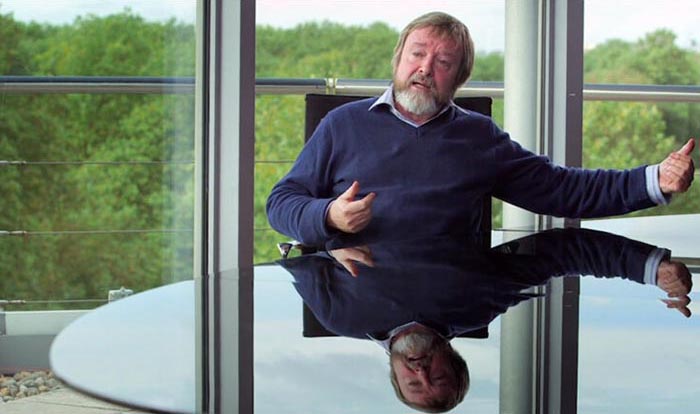
Secondly, to the company of all the great thinkers whom he cites, McGilchrist himself brings something to the party, namely the understanding of the two hemispheres of the brain. This is new, and by shining the light on our contemporary understanding of their features and distinctions, he illuminates and deepens appreciation of earlier work by others.
Nevertheless, the book is in some ways itself a contradiction. As we have already mentioned, McGilchrist argues that language is inherently limited – words and propositions are representations: maps or signs, but not the territory. ‘Ultimately, in fact, all knowledge derives from experience, for which there are no propositions’ (p. 631). If we have to resort to words (rather than music or dance) then poetry is the proper mode in which to attempt to communicate about reality, he believes, citing Whitehead and Heidegger amongst others in support (p. 628). But his is not a book of poetry but a massive piece of prose.
In response, I would point out that McGilchrist praises contradiction and paradox as ‘the root of all movement and vitality’ (p. 1256), and as a good example of what distinguishes left hemisphere thinking (which wants logical clarity) from its right hemisphere counterpart. He understands well that his prospective audience, sympathetic as many of them will be, are inhabitants of this left hemisphere era. Thus his readers will be better able to follow and accept analysis, argument and evidence in prose form.
Similarly, philosophical ideas can easily be dismissed by the left hemisphere (‘Two-and-a-half thousand years of philosophy and still not one agreed truth.’) but hard scientific evidence is not so easily rejected. McGilchrist offers plenty such evidence; one of the reasons for the length of his bibliography is that he has so many scientific citations. I have heard him say that such is the extent of his scientific references that he cannot be accused of cherry picking nor of not having done his homework. He also is able to inform from his own work as a distinguished neurologist.
In short, The Matter with Things adds greatly to our understanding of the world and provides a formidable contemporary argument for a unified vision. As such, it may help break down resistance to the change that is needed while also opening up ways to go forward. What McGilchrist has achieved is to firmly establish two new metaphors – namely right-hemisphere understanding and left-hemisphere understanding – and these will without doubt help bring about, illuminate and communicate new insights. This is the job of metaphor; as he says: ‘Metaphor embodies thought and places it, where it belongs, in a living context … it bridges the gap between language and the world’ (p. 633). McGilchrist’s may save us yet.
A version of this article originally appeared in Beshara magazine in June 2022.
About the Author: Dr Richard Gault has worked at universities in Scotland, Ireland, Holland and Germany, where he has taught and researched a variety of subjects, including the history and philosophy of science and technology. He is a long-term student of the Beshara School and from 2015–2017 was principal of The Chisholme Institute in Scotland.
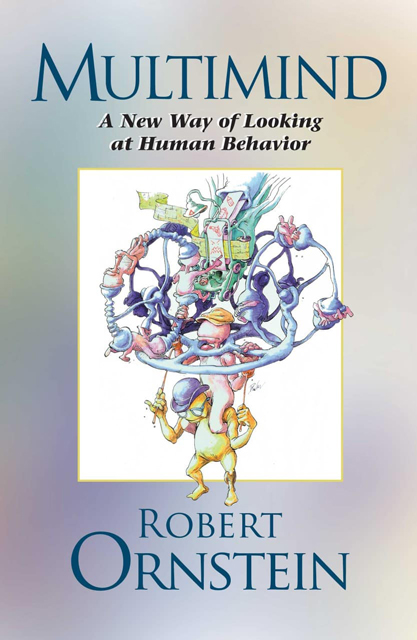
Multimind: A New Way of Looking at Human Behavior
This provocative book challenges the most-popularly held conceptions of who we are. In it, psychologist and renowned brain expert Robert Ornstein (1942 – 2018) shows that, contrary to popular and deep-rooted belief, the human mind is not one unified entity but, rather, is multiple in nature and is designed to carry out various programs at the same time.

Beyond Culture:
Edward T. Hall and Our Hidden Culture
Report by John Zada
Edward T. Hall, after spending his early adulthood working and travelling among non-Anglophones, both in the United States and in other parts of the world, became cognizant and fascinated in the deeper layers of culture that he claimed lie buried beneath those more obvious forms.
In the series: Our Mind in the Modern World
- An Ancient Brain in a Modern World
- Our Unconscious Minds
- Maintaining a Stable World
- The Multiple Nature of Our Mind
- Connecting with Others
- Morality’s Long Evolution
- Unconscious Associations
- The Brain’s Latent Capacities
- God 4.0
- Multimind: A New Way of Looking at Human Behavior
- Thinking Big
- Social
- The Weirdest People in the World
- The Righteous Mind
- New World New Mind
- Moral Tribes
- The Mountain People
- Humanity on a Tightrope
- Fluke
- Beyond Culture
Further Reading »
External Stories and Videos
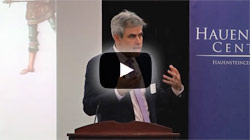
Watch: Jonathan Haidt – The Righteous Mind: Why Good People are Divided by Politics and Religion
Jonathan Haidt Hauenstein Center Talk
Why can’t our political leaders work together as threats loom and problems mount? Why do people so readily assume the worst about the motives of their fellow citizens? In The Righteous Mind, social psychologist Jonathan Haidt explores the origins of our divisions and points the way forward to mutual understanding.

